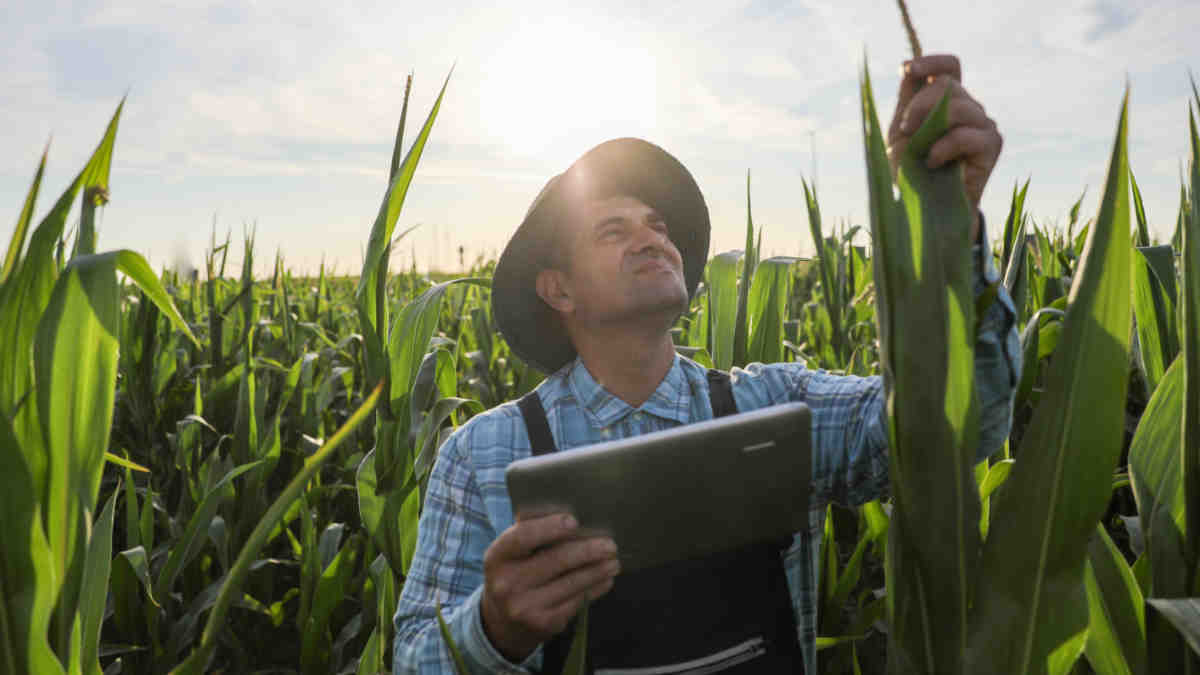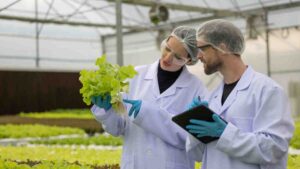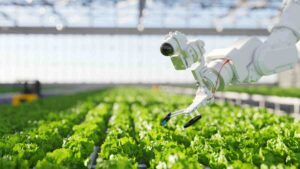Aussie farmers need more than rain, so RLF harvests hope with root-deep tech

RLF’s soil-smart tech builds tougher roots and better resilience. Picture via Getty Images
- Wheat crop under pressure as dry soils persist
- RLF AgTech steps in with tech to boost roots and resilience
- New trial shows better soil, stronger crops, and lower emissions
It’s supposed to be winter planting season.
But in parts of Victoria and South Australia, the soil’s so dry it crumbles like stale cake.
In Western Australia, a few inches of rain have painted the paddocks green, but scratch beneath the surface, and you’ll find the same old story.
Shallow roots, bone-dry subsoil, and farmers praying the next cold front doesn’t pass them by.
The official forecasts from ABARES expect this year’s national wheat crop to drop by at least 10%, down to 30.6 million tonnes.
This is a figure that, while above the 10-year average, is well below last season’s bounty. Some analysts reckon the number could fall as low as 28 million tonnes.
And that’s not just bad luck. It’s the culmination of years of soil stress, input fatigue, and farming systems pushed to the brink.
The knock-on effects could stretch far beyond the farm gate. China, Indonesia, and other major buyers are watching closely.
Global grain stocks are already under pressure, and any shortfall from Australia – the world’s fourth-largest exporter – adds heat to a market already twitchy from Black Sea instability.
From dry dirt to living soil
But this isn’t just a weather story, it’s a soil story.
And it’s forcing the industry to confront an uncomfortable reality: Australia can’t keep playing roulette with rain.
That’s where companies like RLF AgTech (ASX:RLF) are quietly changing the story, from the ground up, literally.
At a glance, RLF might look like just another fertiliser company. But that’s missing the point.
Its core innovation, Plant Proton Delivery Technology (PPD Tech), works at a cellular level to build bigger, stronger root systems and rejuvenate the very soil those crops depend on.
In a season like this, where rain offers only temporary relief, RLF’s tech could create resilience from within.
By priming seeds and delivering nutrients directly through the leaf or soil, it helps crops pull more from what little moisture and nutrients are there, while also laying down the organic carbon that makes next year’s soil just a bit stronger than the last.
It’s not a silver bullet.
But it’s a step toward breaking the cycle of nutrient-hungry farming that’s left roughly a third of the world’s soils degraded.
Boosting yields, building better food
Stronger roots mean better uptake of micronutrients like zinc, manganese, and boron. That’s critical, not just for healthier crops but for more nutritious food on the table.
RLF’s idea is simple: feed the plant the way it was meant to be fed.
The execution, though, is high-tech.
It blends agronomy, chemistry and sustainability in a way that helps plants thrive without depending so much on synthetic inputs.
And it’s not the only company chasing that future.
ClearVue Technologies (ASX:CPV)‘s ag-tech arm, OptiCrop, has just scored its first commercial sale in Israel for a root-zone cooling system that keeps plant temps in the “Goldilocks zone”.
It works like air-conditioning for crops, and when paired with ClearVue’s solar glass, the whole system runs off-grid.
Another company, Ridley Corporation (ASX:RIC), has just snapped up the old Incitec Pivot Fertilisers distribution network for $300 million, giving it a near stranglehold on east coast supply.
Stronger soil, lower emissions
Meanwhile, growers are under pressure to reduce emissions and improve soil carbon. RLF is giving them tools to do both.
And that’s becoming a big deal, not just in ESG reports but on real farms.
Take its recent Hillston Soil Carbon Project in NSW – a real-world test bed that’s part of the federal Australian Carbon Credit Unit (ACCU) Scheme.
After just one season using RLF’s Accumulating Carbon in Soil System (ACSS), soil organic carbon in some zones jumped by up to 5%.
Greenhouse gas emissions fell by 29% across the project area, and synthetic fertiliser use dropped dramatically.
Instead of pounding the paddock with urea and monoammonium phosphate, the trial used RLF’s PPD-based inputs to do more with less.
“The 29% reduction in greenhouse gas emissions is a significant achievement – and once the transition to RLF’s system is complete, even greater emission reductions are expected”, said Carbon West’s Jennifer West.
In a tightening margin environment, the ability to pull more value from each hectare is becoming a competitive edge, not a bonus.
“We’ve got the chance to make a genuine difference to global food security, soil health and meaningful carbon sequestration,” said RLF’s acting managing director, Gavin Ball.
“All this, without making things any harder for our farmers.”
At Stockhead we tell it like it is. While RLF AgTech and ClearVue Technologies are Stockhead advertisers, they did not sponsor this article.
This story does not constitute financial product advice. You should consider obtaining independent advice before making any financial decision.
Related Topics
UNLOCK INSIGHTS
Discover the untold stories of emerging ASX stocks.
Daily news and expert analysis, it's free to subscribe.
By proceeding, you confirm you understand that we handle personal information in accordance with our Privacy Policy.








